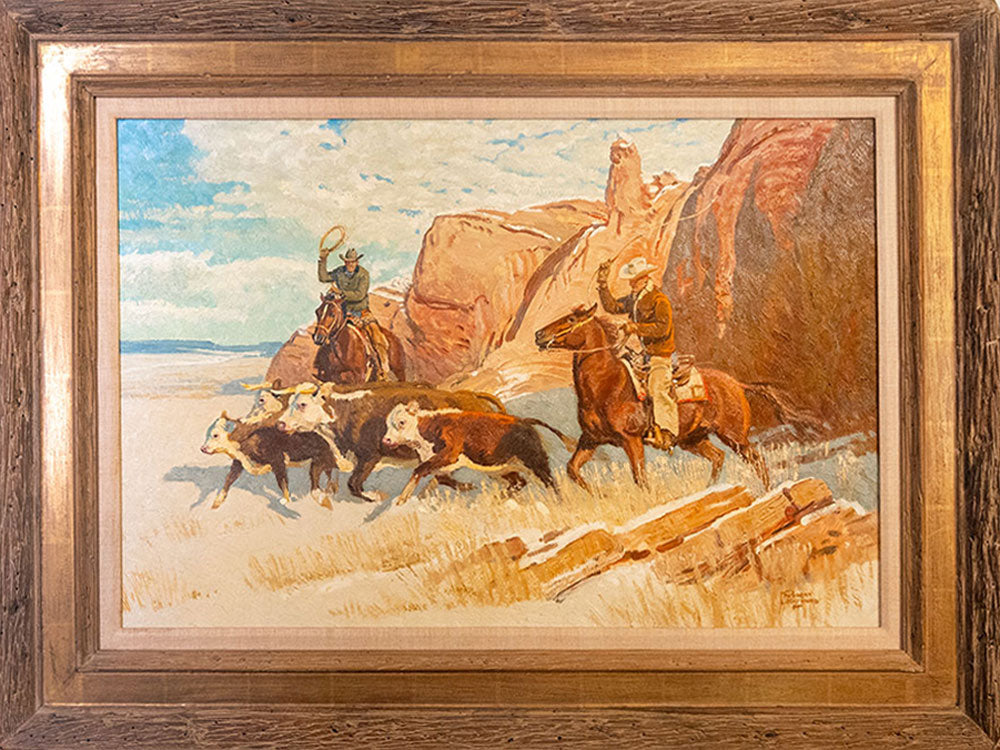
Robert Lougheed (1910-1982)

Robert E. Lougheed observed the natural world with careful intensity; he would frequently exclaim, “Isn’t it wonderful?” His love of nature shows in his exceptional paintings of the West, infused with realistic detail and vividness. Lougheed believed in the inherent truth of art and he was often called a “painter’s painter.”
Born on a farm in central Canada, Lougheed was the second of three sons and he learned to cut wheat, stack hay, and hoe corn. When the boys were school age, the family moved to Dufferin County. Lougheed attended a red brick schoolhouse where many students rode a horse to class.
Lougheed sketched the animals and wildlife around him as a young boy, and began his formal art training through correspondence. He continued at the Ontario College of Arts and the École des Beaux-Arts in Montréal. During his early twenties, Lougheed worked full-time as an illustrator for the Toronto Star, attended night school, and painted on the weekends. Later, he studied with Frank Vincent Dumond and Dean Cornwell in New York. Years afterward, in a reunion with Lougheed, Dumond exclaimed, “There goes the best I ever had!” That from a man who had also taught Georgia O’Keeffe, Buck Dunton and Norman Rockwell.
Though he missed the wide-open spaces, Lougheed was very successful as a commercial artist in New York. His work included the flying red horse for Mobile Oil, calendars for Brown & Bigelow, and the six-cent Buffalo Stamp. He spent half of the year on commercial endeavors, and the other half on fine art painting and associated travel.
Among Lougheed’s many commissions was a horse series for The National Geographic in the early 1960s at the famous Bell Ranch in eastern New Mexico. He found the country so beautiful that he returned to New Mexico every fall until 1970, when he and his wife Cordy moved to Santa Fe permanently.
Lougheed was elected to membership in the Cowboy Artists of America (CA) in 1968, and to the National Academy of Western Art (NAWA) in 1973. He won an astounding 27 gold and silver medals in their exhibitions. In addition, he won the Colt Firearms Award (CAA), the Jasper Cropsey Award, the Grumbacher Award, the Franklin Mint Gold Medal for Distinguished Western Art, and the Miriam B. Cropsey Award.
